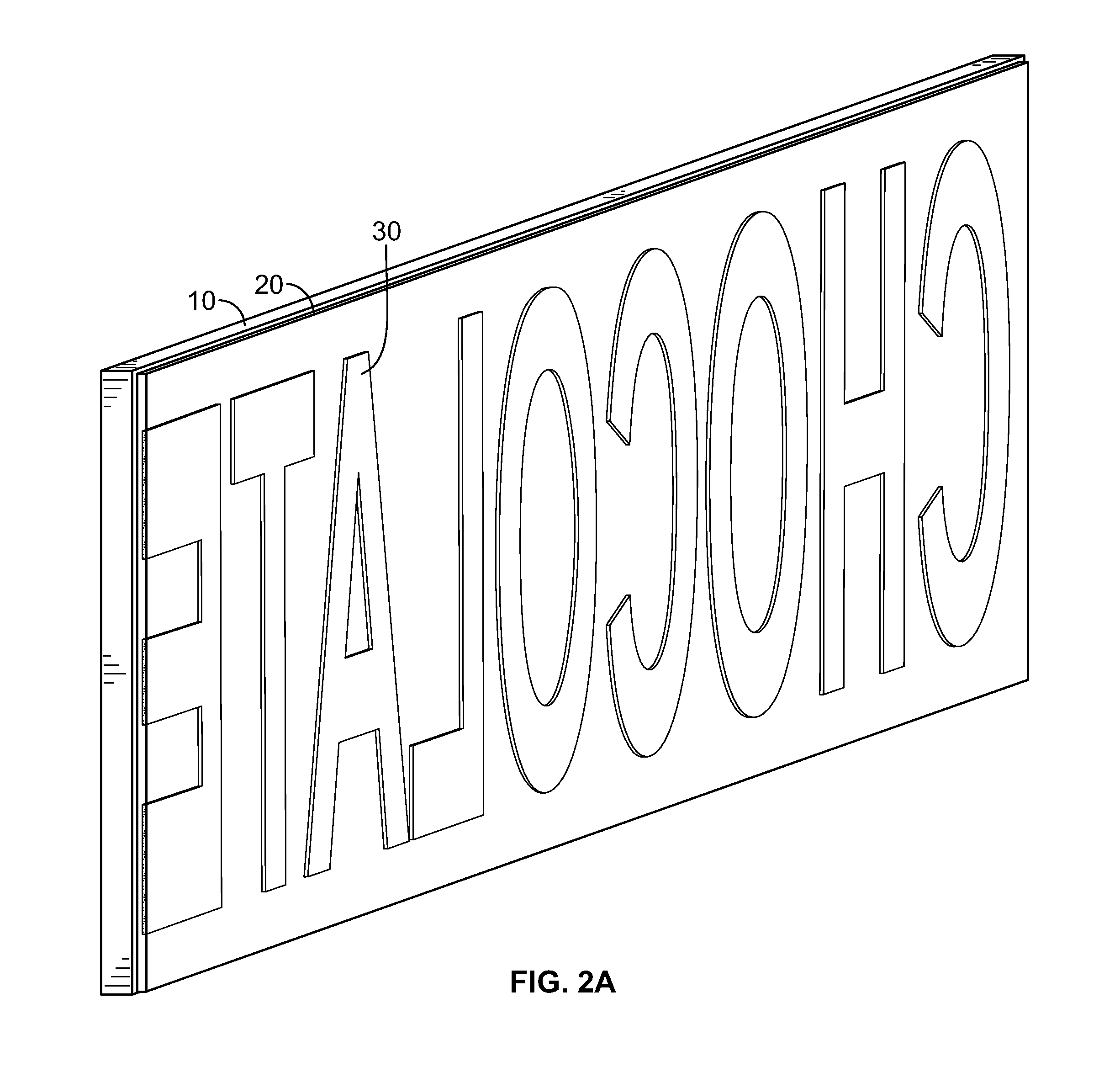Process for adhering an edible printed image to a chocolate confection
a printing image and confection technology, applied in the field of confectionery products, can solve the problems of significant limitation in the ability to view the image at the intended resolution, significant interference with the ability to view the image at the intended level of resolution, and image is subject to smearing or other unintended distortion
- Summary
- Abstract
- Description
- Claims
- Application Information
AI Technical Summary
Benefits of technology
Problems solved by technology
Method used
Image
Examples
Embodiment Construction
[0016]Turning to FIG. 1, a transfer sheet 10 is shown on which a transparent edible film 20 is formed. The transfer sheet 10 is any suitable plastic film material, such as acetate, and is preferably clear in order to be able to inspect the image that is subsequently printed on the transparent edible film 20 prior to being adhered to a chocolate confectionery product.
[0017]The transparent edible film 20 may be any edible, transparent film material on which an image is capable of being printed. The transparent edible film 20 typically includes a starch and may also include other ingredients such as sugar, gelatin and / or cocoa butter. Various transparent edible films 20 are known within the art and may be formulated and created on the transfer sheet 10; alternatively, previously formed edible film / transfer sheet combinations are commercially available and include, for example, the product known as a chocosheet.
[0018]An image 30 is then printed on the transparent edible film 20 as illus...
PUM
 Login to View More
Login to View More Abstract
Description
Claims
Application Information
 Login to View More
Login to View More - R&D
- Intellectual Property
- Life Sciences
- Materials
- Tech Scout
- Unparalleled Data Quality
- Higher Quality Content
- 60% Fewer Hallucinations
Browse by: Latest US Patents, China's latest patents, Technical Efficacy Thesaurus, Application Domain, Technology Topic, Popular Technical Reports.
© 2025 PatSnap. All rights reserved.Legal|Privacy policy|Modern Slavery Act Transparency Statement|Sitemap|About US| Contact US: help@patsnap.com



